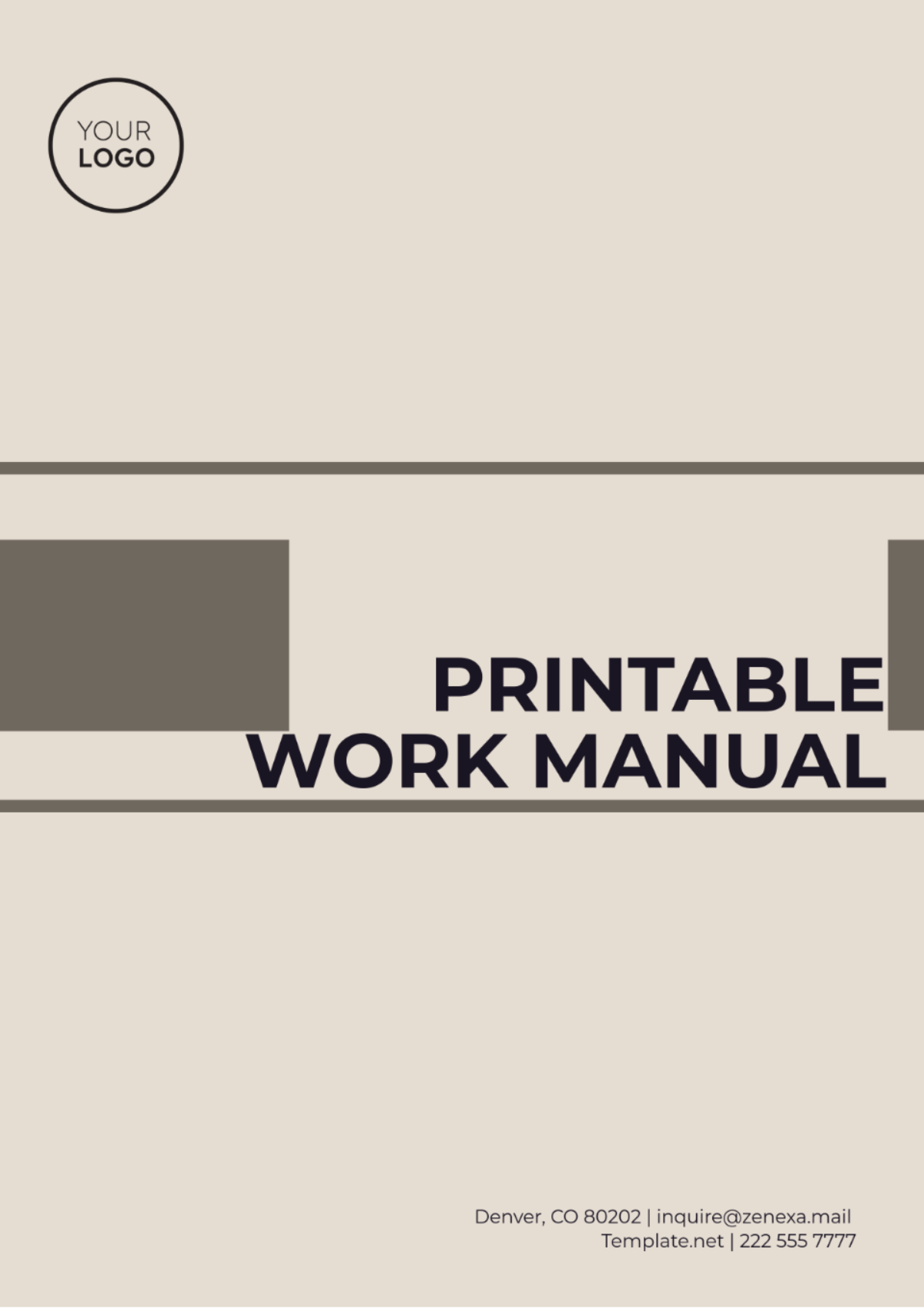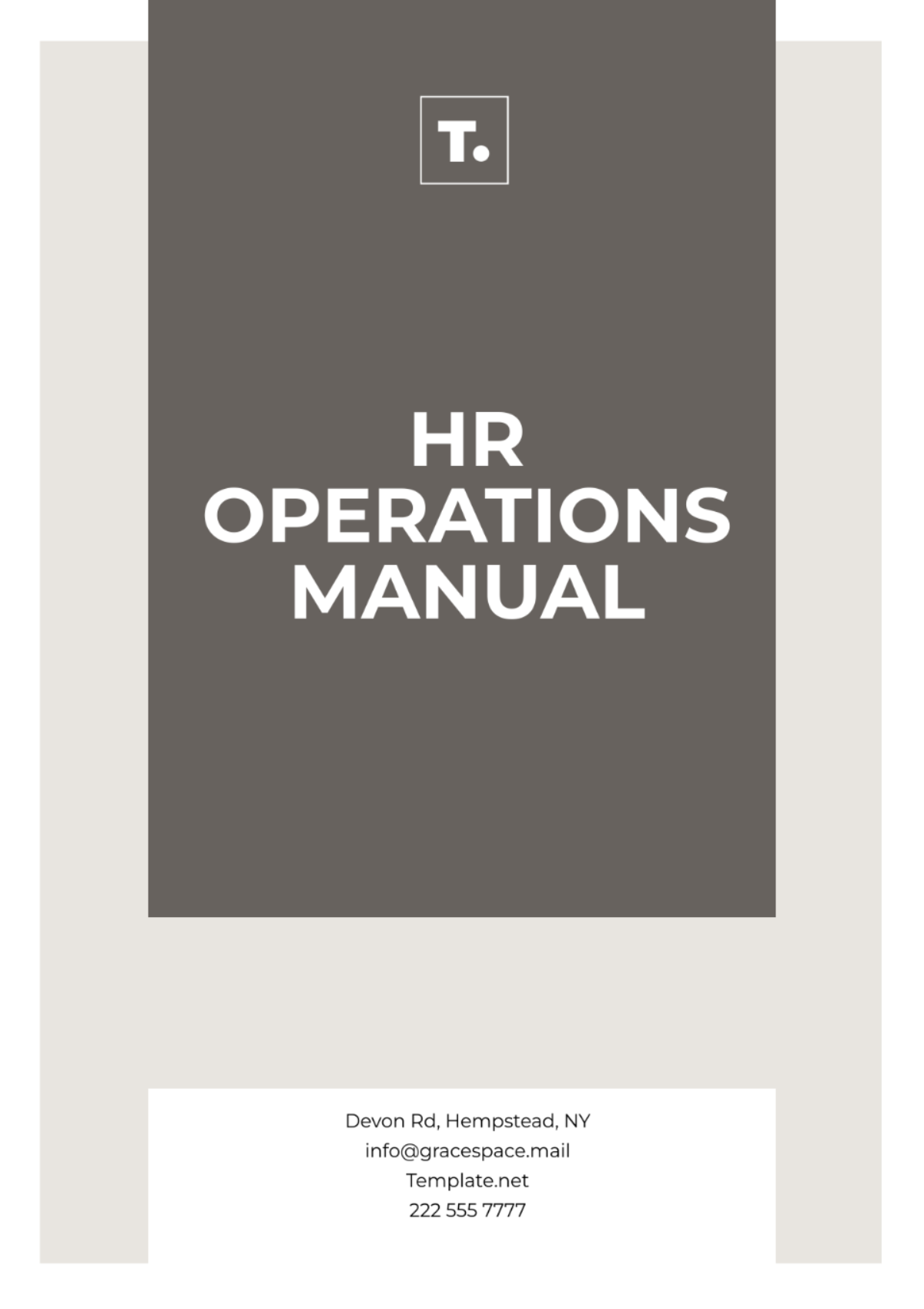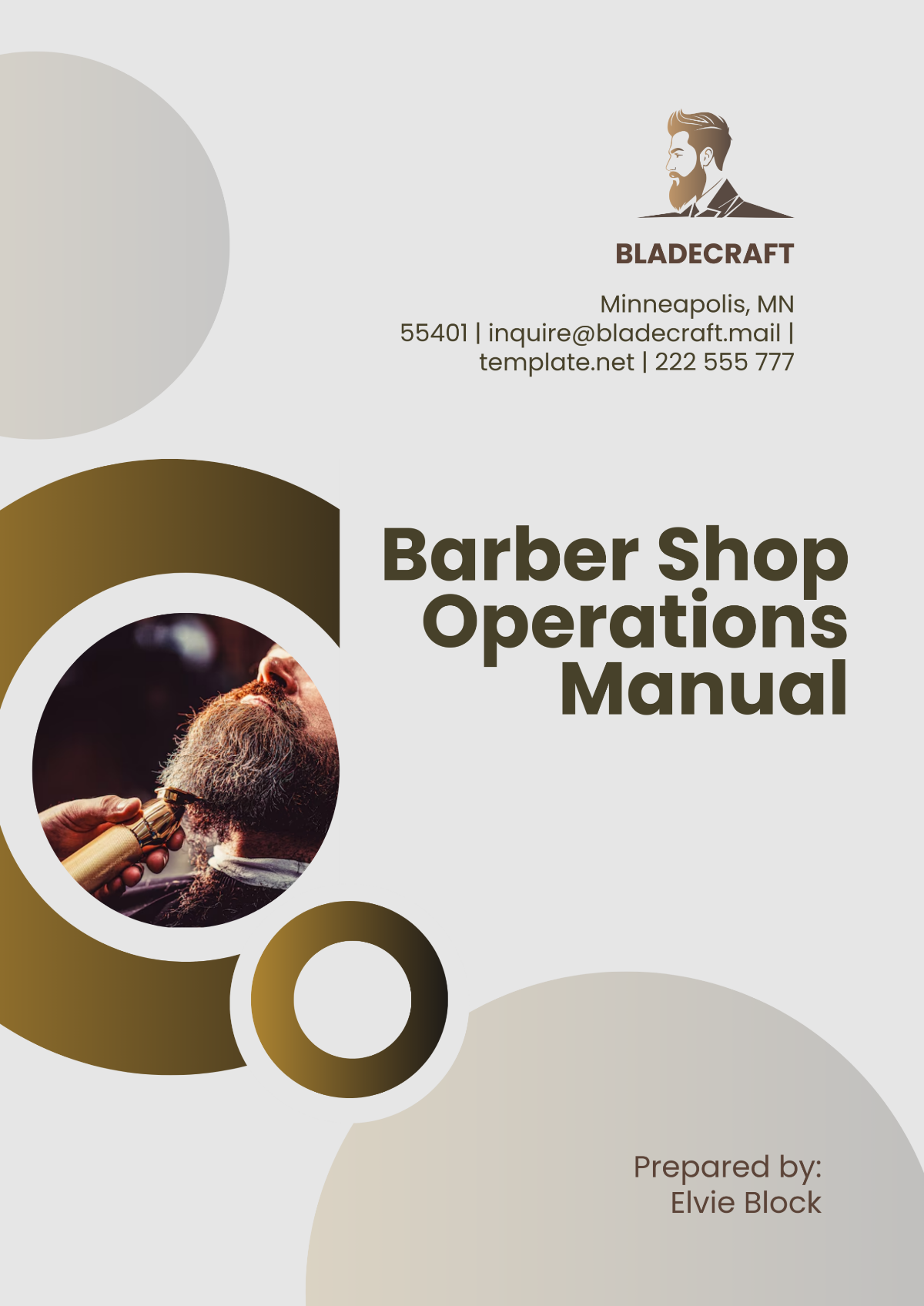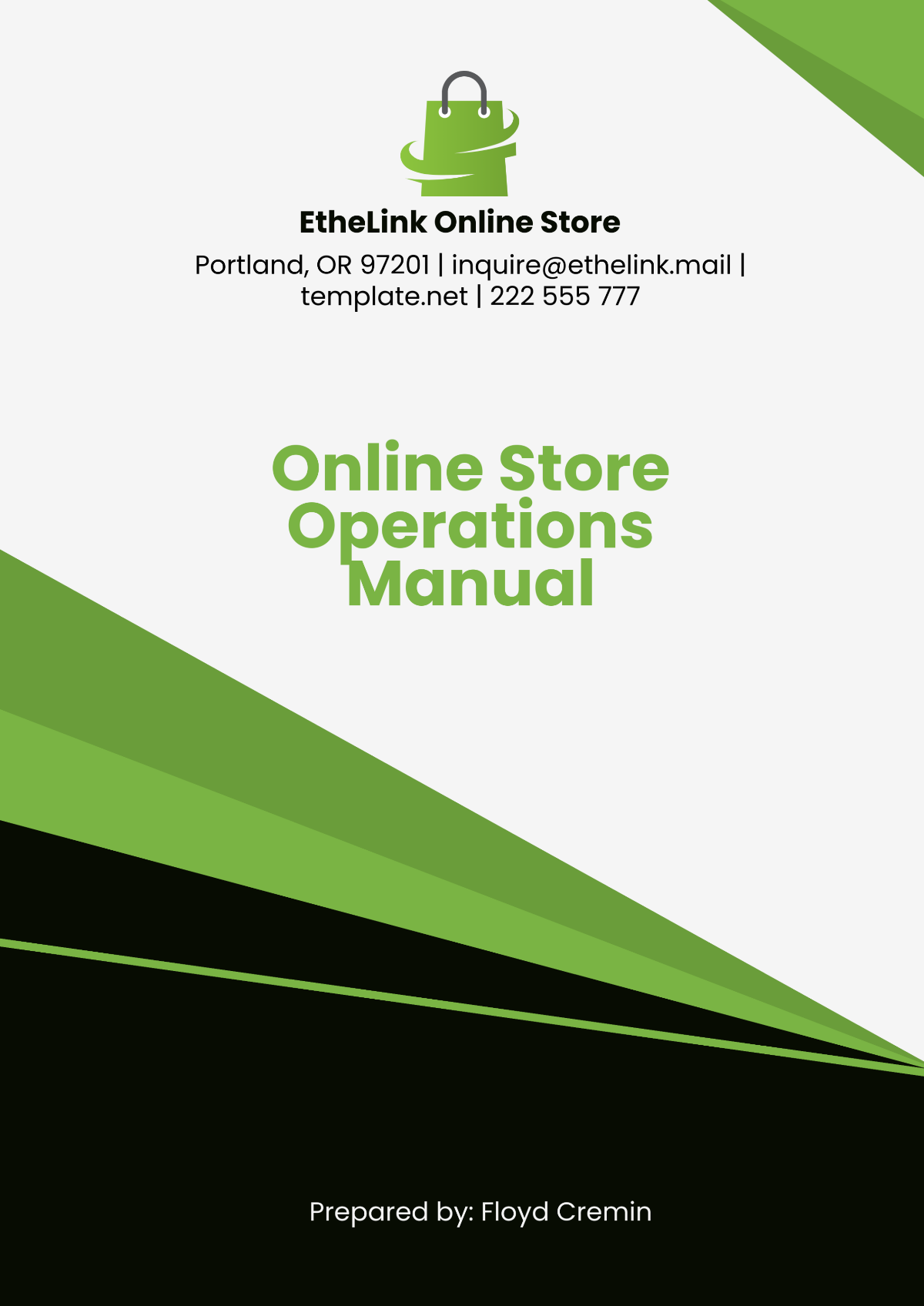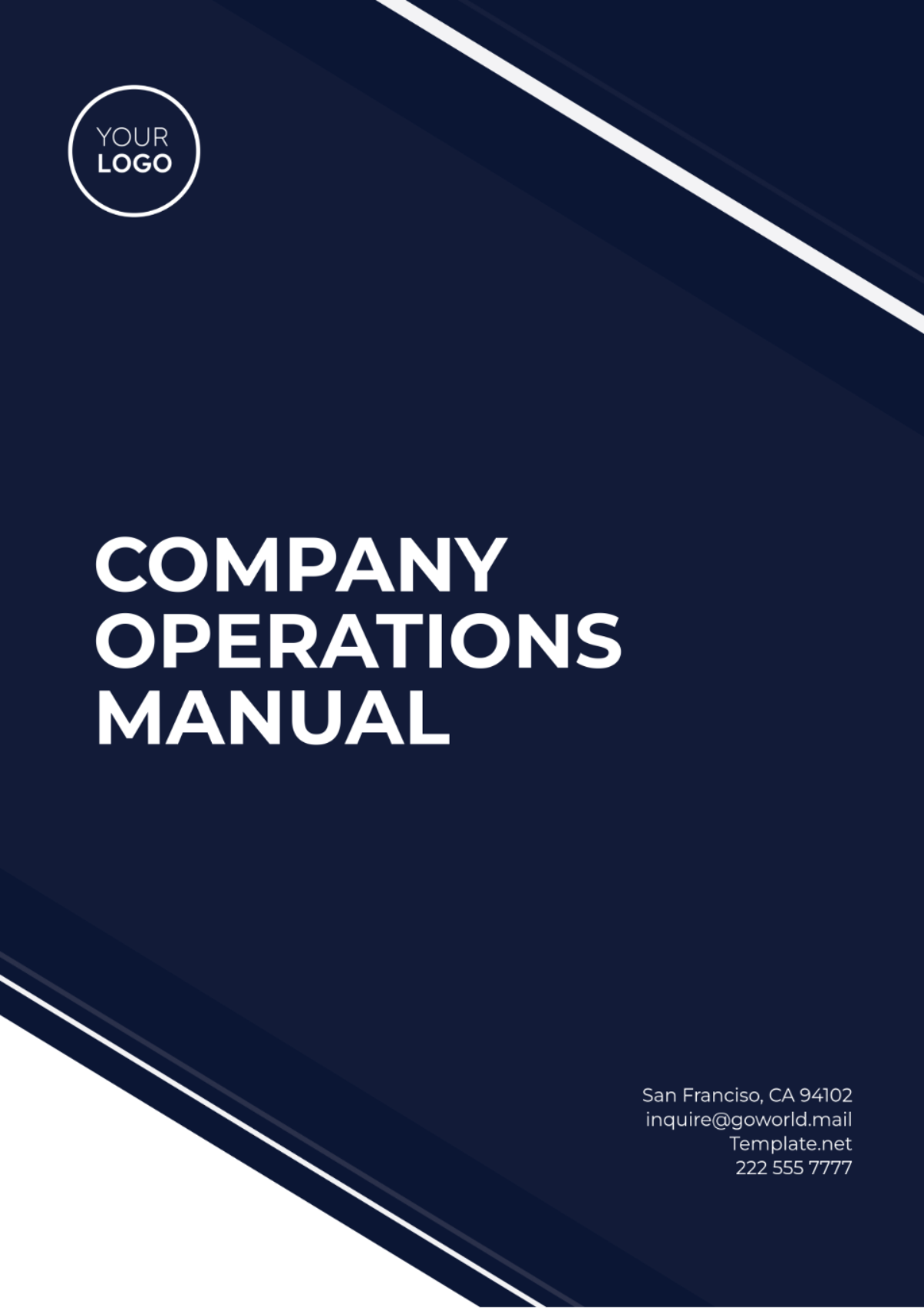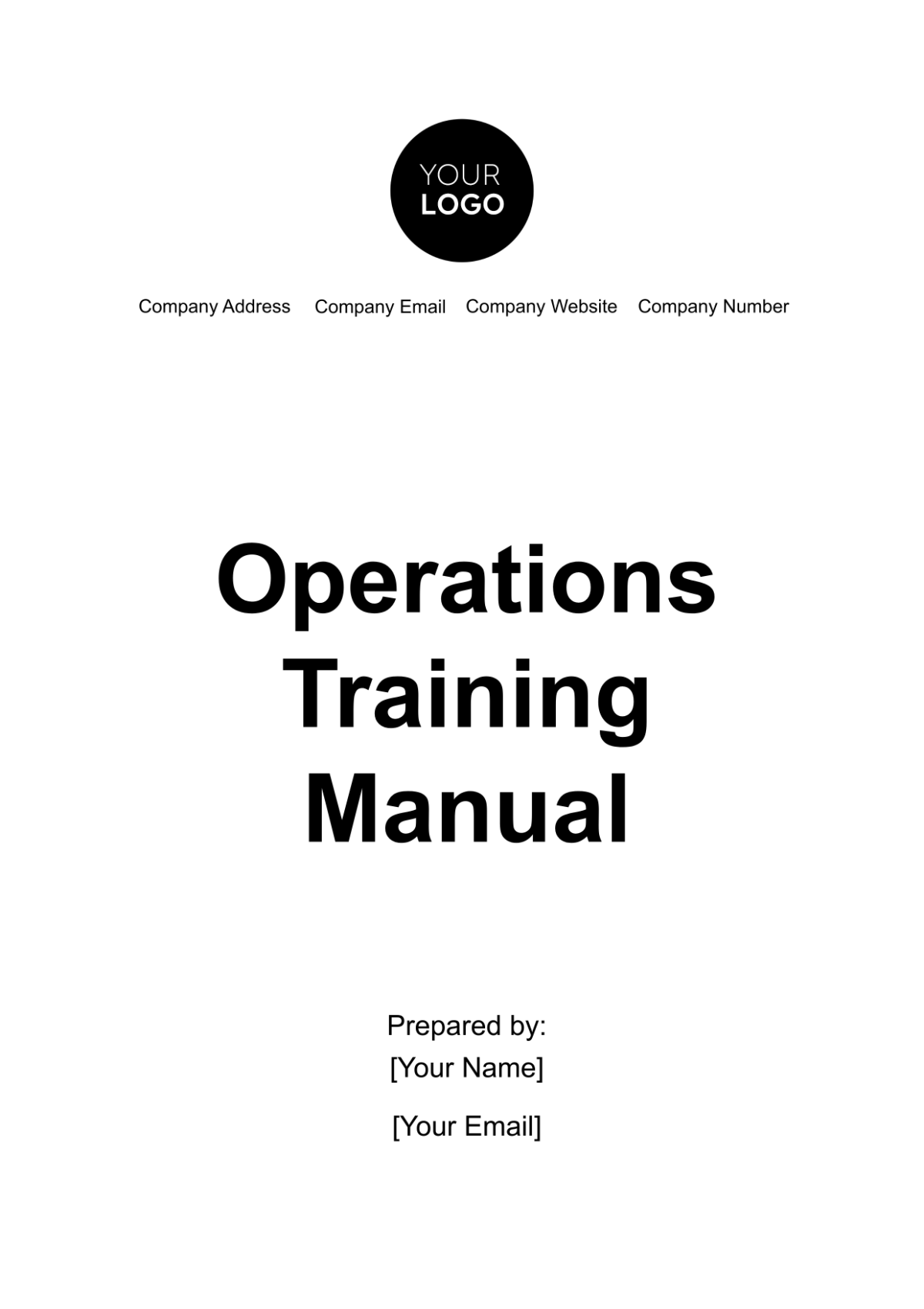Operations Customer Support Training Manual
I. Introduction
A. Purpose of the Manual
This manual is your comprehensive guide to mastering customer support operations in our company. It’s not just a document, but a companion that will guide you through the various aspects of customer support, providing you with the knowledge and skills needed to excel in your role. It’s designed to be a reliable resource that you can turn to whenever you need guidance or clarification.
B. Scope of Training
The training provided in this manual is all-encompassing, covering every facet of customer support within our operations department. It delves into the nuances of our products and services, the importance of customer support, the tools and software we use, and the strategies for handling different types of customer interactions. It’s not just about providing information, but about equipping you with the practical skills needed to apply this information effectively.
C. Key Objectives
The objectives of this manual are the following:
Foster the development of essential customer support skills.
Facilitate effective use of our customer support tools and software.
Provide strategies for handling a variety of customer interactions.
Promote a culture of continuous learning and improvement within the customer support team.
II. Understanding Customer Support
A. Role in Operations
The following table provides a detailed breakdown of the various roles within our operations department that are crucial for customer support:
Role | Responsibilities |
|---|---|
Customer Support Representative | Directly interacts with customers to address inquiries and resolve issues. |
Operations Manager | Oversees the overall operations and ensures the efficiency of customer support processes. |
Quality Assurance Specialist | Monitors customer interactions to ensure quality service and adherence to company policies. |
Training Coordinator | Organizes training programs to equip customer support representatives with necessary skills and knowledge. |
Technical Support Specialist | Provides technical assistance to both customers and customer support representatives. |
The streamlined roles within the operations department play a pivotal role in ensuring the smooth functioning of customer support. Each role, from the Customer Support Representative to the Technical Support Specialist, contributes to a well-oiled machine that works tirelessly to provide excellent service to our customers. The Customer Support Representative serves as the face of the company, directly interacting with customers and resolving their issues. The Operations Manager ensures the efficiency of processes, while the Quality Assurance Specialist maintains the standard of service. The Training Coordinator equips the team with necessary skills, and the Technical Support Specialist provides crucial technical assistance.
This structure not only ensures that each aspect of customer support is handled by a specialist in that area, but also promotes collaboration and teamwork. Each role is interconnected, and the success of one role often depends on the effective performance of another. This interdependence fosters a sense of unity and shared responsibility within the team. Moreover, it allows for a more efficient and effective customer support operation, as tasks are divided according to expertise. This results in quicker resolution of customer issues, higher customer satisfaction, and ultimately, a stronger reputation for the company.
B. Importance of Customer Satisfaction
Customer satisfaction is the lifeblood of our business. It’s not just about making a sale; it’s about building a relationship with our customers that is based on trust, respect, and mutual benefit. When customers are satisfied, they are more likely to become repeat customers, recommend our products and services to others, and provide valuable feedback that can help us improve. In essence, customer satisfaction is a key indicator of our business’s health and future growth potential.
Moreover, in today’s digital age, where customers have a plethora of options at their fingertips, customer satisfaction has become even more critical. A single negative experience can prompt a customer to switch to a competitor. Therefore, we must strive to not only meet but exceed our customers’ expectations at every touchpoint.
C. Impact on Business Goals
Customer support plays a crucial role in achieving our business goals. It directly influences our company’s reputation, customer retention rates, and bottom line. Effective customer support can turn first-time buyers into loyal customers, transform dissatisfied customers into satisfied ones, and turn satisfied customers into advocates for our brand.
Furthermore, customer support provides valuable insights into our customers’ needs and expectations, which can inform our product development, marketing strategies, and overall business decisions. By aligning our customer support strategies with our business goals, we can create a customer-centric organization that drives growth and success.
Remember, customer support is not just a department within our company; it’s the attitude and approach we take towards serving our customers. It’s about creating a positive customer experience at every stage of the customer journey, from the first point of contact to after-sales service.
III. Customer Support Skills
A. Communication Skills
Effective communication is a multi-faceted skill that involves:
Active Listening: This is the first step in effective communication. It involves not just hearing but understanding the customer’s concerns and needs. Active listening requires full concentration, understanding, responding, and then remembering what is being said.
Clarity: This involves conveying your thoughts and solutions in a clear, concise manner. Avoid using jargon unless necessary. Clarity in communication not only helps in understanding the message but also builds trust between the customer and the representative.
Positive Language: Using positive language can help create a friendly and helpful interaction with the customer. It involves using phrases that show respect, empathy, and patience. Positive language aims to avoid misunderstandings and create a good rapport with the customer.
B. Problem-Solving Skills
Problem-solving is a critical skill in customer support and involves:
Understanding the Problem: This involves actively listening to the customer and asking the right questions to fully understand the issue. It’s about digging into the problem and understanding its root cause.
Critical Thinking: This involves analyzing the problem, considering possible solutions, and choosing the most effective one. Critical thinking requires a deep focus on the problem at hand and a systematic approach to finding a solution.
Implementation: Once a solution has been identified, it needs to be implemented effectively. This may involve guiding the customer through the solution or escalating the issue to the relevant department. Implementation is all about action and it’s where the problem-solving process sees results.
C. Empathy and Patience
Empathy is about more than just understanding the customer’s perspective. It’s about validating their feelings and letting them know that their concerns are important. When a customer reaches out with a problem, they want to feel heard and understood. By empathizing with their situation, we can build a stronger connection and foster a sense of trust.
Patience, on the other hand, is about staying calm and composed, even in challenging situations. Dealing with upset or frustrated customers can be difficult, but it’s important to remember that they’re not upset with you personally. They’re upset with the situation. By remaining patient and maintaining a positive attitude, we can help diffuse the situation and work towards a resolution.
IV. Tools and Software
In the realm of customer support, various tools and software are utilized to streamline processes and enhance efficiency. The following table provides an overview of these tools and their respective functions:
Tool/Software | Function |
|---|---|
Customer Relationship Management (CRM) System | Manages customer data, interactions, and facilitates business processes. |
Ticketing System | Organizes customer issues and ensures timely resolution. |
Communication Platforms | Facilitates interaction with customers across various channels like email, phone, and live chat. |
The importance of these tools and software in customer support cannot be overstated. They are the backbone of our customer support operations, enabling us to provide efficient, effective, and personalized service. By centralizing customer information, streamlining processes, and facilitating communication, these tools significantly enhance our ability to serve our customers.
Moreover, these tools are not static. They evolve with technological advancements and changing customer expectations. Therefore, it’s crucial for customer support representatives to stay updated with the latest features and best practices related to these tools. Regular training and practice can ensure that we are leveraging these tools to their full potential, thereby maximizing our efficiency and effectiveness in customer support.
V. Handling Customer Inquiries
Handling customer inquiries is a critical part of customer support. It involves a systematic process to ensure every customer query is addressed effectively and efficiently. Here’s an overview of the process presented in the diagram below:
A. Receive Inquiry
The process begins when a customer reaches out with a query or issue. This could be via email, phone call, live chat, or any other communication channel. The key here is to respond promptly and professionally, acknowledging the customer’s inquiry and assuring them that you’re there to help. A quick response time can significantly enhance the customer’s experience and set the tone for the rest of the interaction.
B. Understand the Issue
Once the inquiry has been received, the next step is to understand the customer’s issue or question. This involves active listening and asking the right questions to fully understand the customer’s concern. It’s important to empathize with the customer and validate their concerns. This step may also involve reviewing the customer’s history with the company, if necessary, to get a better context of the issue.
C. Find a Solution
After understanding the issue, the next step is to find a solution. This involves problem-solving and critical thinking. It’s about analyzing the issue, considering possible solutions, and choosing the most effective one. This may involve consulting with colleagues or superiors, or using resources like knowledge bases or manuals. The goal is to find the best possible solution in the shortest possible time.
D. Communicate the Solution
Once a solution has been found, it needs to be communicated to the customer in a clear and understandable manner. This involves explaining the steps the customer needs to take or the actions that will be taken on the company’s end. It’s important to ensure the customer understands the solution and is satisfied with it. Clear communication can prevent further confusion and ensure a positive resolution of the issue.
E. Follow Up
The final step in the process is to follow up with the customer. This is about ensuring the customer is satisfied with the solution and their issue has been fully resolved. This could involve a follow-up email or call to the customer, asking them if everything is okay and if there’s anything else they need help with. Follow-ups show customers that you care about their experience and are there to support them even after their issue has been resolved.
VI. Dealing with Difficult Situations
A. Handling Complaints
Complaints are an inevitable part of customer support, but they provide valuable opportunities for improvement. When handling complaints, it’s crucial to:
Listen Actively: Allow the customer to express their concerns fully without interruption. This shows respect for their feelings and helps you understand the issue better.
Acknowledge and Apologize: Acknowledge the customer’s dissatisfaction and apologize for any inconvenience caused, regardless of whether the company is at fault. This can help to defuse the situation and make the customer feel heard.
Find and Communicate the Solution: Identify the root cause of the problem and find a solution. Communicate this solution to the customer clearly and assure them that steps are being taken to resolve the issue.
Follow Up: After the issue has been resolved, follow up with the customer to ensure they are satisfied with the solution. This shows the customer that you value their feedback and are committed to improving their experience.
B. Managing Escalations
There may be times when a customer’s issue needs to be escalated to higher management or a different department. In such cases:
Assure the Customer: Let the customer know that their issue is being taken seriously and will be addressed promptly.
Escalate Effectively: Provide all the necessary information when escalating the issue to ensure it can be resolved efficiently.
Communicate Clearly: Keep the customer informed about the status of their issue and set realistic expectations about resolution times.
C. Resolving Conflicts
Conflict resolution is a critical skill in customer support. It involves finding a mutually acceptable solution to a problem. Here are some strategies:
Stay Calm and Professional: Even if the customer is upset, it’s important to remain calm and maintain a professional demeanor.
Understand the Customer’s Perspective: Try to see the situation from the customer’s point of view. This can help you understand their frustrations and find a suitable solution.
Work Towards a Solution: Collaborate with the customer to find a solution that satisfies both parties. This may involve compromise or finding alternative solutions.
Remember, dealing with difficult situations is not just about resolving the issue at hand, but also about turning a negative experience into a positive one. It’s an opportunity to demonstrate the company’s commitment to customer satisfaction and build stronger relationships with customers.
VII. Continuous Improvement
Continuous improvement is a fundamental principle in customer support. It’s about constantly striving to enhance the quality of service, exceed customer expectations, and drive overall business growth.
A. Seeking Feedback
Feedback is the voice of the customer and a vital tool for improvement. It provides direct insights into the customer’s experience, their needs, and their expectations. This can be obtained through various channels such as customer surveys, feedback forms, social media, or even direct conversations. Analyzing this feedback can reveal patterns, trends, and areas of improvement. But seeking feedback is not enough, acting on it is crucial. Implementing changes based on feedback shows customers that their opinion matters and helps in building stronger relationships.
B. Learning and Development
In the ever-evolving world of customer support, learning and development are crucial. This involves:
Regular Training: Regular training sessions help customer support representatives to stay updated with the latest industry trends, product updates, and customer service techniques.
Skill Development: This involves developing key customer service skills like communication, empathy, problem-solving, and technical skills.
Knowledge Sharing: Encouraging knowledge sharing within the team can help in spreading best practices and innovative ideas.
C. Performance Metrics
Performance metrics provide a quantitative measure of the effectiveness of customer support. They help in tracking progress, identifying areas of improvement, and setting goals. Some key performance metrics in customer support include:
Customer Satisfaction Score (CSAT): This measures the customer’s satisfaction with a particular interaction or overall service.
First Response Time: This measures the average time taken to respond to a customer’s inquiry.
Resolution Time: This measures the average time taken to resolve a customer’s issue.
VIII. Appendices
A. Glossary of Terms
Average Handling Time (AHT): The average time it takes for a customer support representative to handle a customer interaction from start to finish.
Customer Relationship Management (CRM): A technology for managing all your company’s relationships and interactions with customers and potential customers.
First Call Resolution (FCR): A metric that measures the percentage of customer inquiries that are resolved in the first interaction.
Knowledge Base: A centralized repository of information about products, services, or other topics.
Net Promoter Score (NPS): A measure of customer loyalty and satisfaction based on the question “How likely are you to recommend our company to a friend or colleague?”
Quality Assurance (QA): The process of ensuring that the quality of customer service meets the set standards.
Response Time: The amount of time it takes for a customer support representative to respond to a customer’s inquiry.
Service Level Agreement (SLA): A contract between a service provider and a customer that specifies the level of service expected during the contract’s duration.
Ticket: A record of a customer’s inquiry or issue, used to track the progress of resolution.
Upselling: A sales technique where a seller induces the customer to purchase more expensive items, upgrades, or other add-ons in an attempt to make a more profitable sale.
B. Frequently Asked Questions (FAQs)
Q: What is the average response time for customer inquiries?
A: Our average response time is within 24 hours. However, we strive to respond as quickly as possible.
Q: How can I escalate my issue if it’s not resolved?
A: If your issue is not resolved, you can request to speak with a supervisor or manager who can further assist you.
Q: Do you offer support in languages other than English?
A: Yes, we offer support in several languages. Please let us know your preferred language and we will do our best to accommodate you.
Q: What should I do if I find a bug in your product?
A: If you find a bug, please report it to our customer support team with as much detail as possible. We appreciate your help in improving our products.
Q: How can I give feedback about my customer support experience?
A: We value your feedback. After your issue is resolved, you will receive a follow-up email with a link to a short survey where you can share your experience



